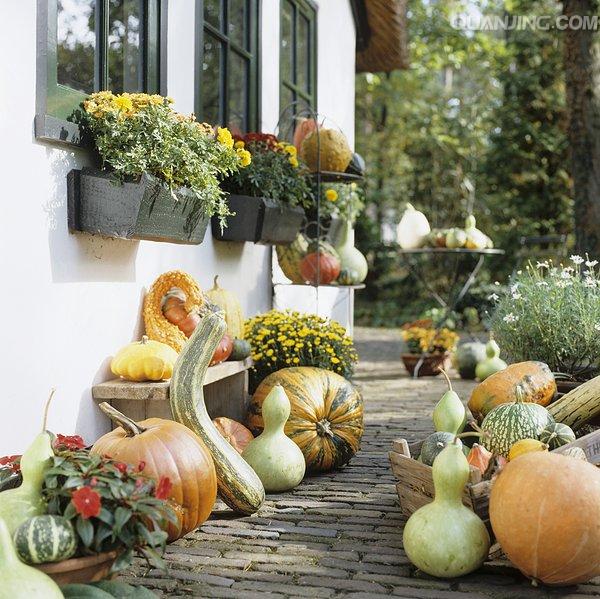|
|

|
Permaculture: Some Main Points to Keep in Mind
From the four main Permaculture principles that have just been discussed, we have adapted eight main points for use in the Permaculture Nutrition courses. They are as follows:
- Observe, learn, share – Nature is the best teacher we have
- See solutions, not problems
- Think ahead
- See the whole picture
- Everything works together – Think cooperation, not competition
- Be efficient – Use everything to its fullest potential
- Be diverse – Nature always plants a variety
- Conserve energy – Let nature do the work
Main Point 1: Oberserve, Learn, and Share – Nature is the best teacher that we have
Traditional cultures, such as we find in Malawi, sustained countless generations of people primarily through observation of nature. These observations were used to learn the best way to use each plant or animal to their fullest potential and to meet the needs of the community members. Finally, this knowledge was shared by passing it on from grandparents to parents to children for hundreds of years, all the while evolving as people learned more about their resources. From this knowledge in Malawi we can now list close to 600 different foods from plants and animals that can be used to assist in attaining true ‘food security’! There are also countless medicines, dyes, fuel sources, fibers, building supplies and more that we can be incoporating into our designs for a sustainable solution. Permaculture encourages us to protect these resources and to continue to observe and learn from nature and our ancestors, then to share our knowledge and experience with others. Today, however, due to families being more mobile, school curriculums that don’t emphasize this type of knowledge, and even a tendency by younger generations to look upon this knowledge as somehow “backwards”, we are in danger of losing a great deal of valuable information. Even well intentioned foreign aid programmes have contributed to this in part. In the past when people were faced with difficult times they were able to turn to traditional knowledge for survival skills. The older people knew which plants and animals were edible, and which plans held stores of water. Now, after shipments of foreign food aid have been used in situations like this, people no longer turn to this traditional knowledge. So, if this knowledge is lost and food aid fails to come through, it could potentially spell disaster for entire communities. Once this knowledge has been lost, we have to start all over.
Main Point 2: See Solutions, Not Problems
It is very easy to get caught up in problems. How many times have you been with a group of people and the discussion ends up being focused on problems? When you leave the conversation you end up feeling dragged down, depressed, or with the thought that very little was accomplished. Problem identification is not necessarily a bad thing, and sometimes it may even be an essential step in looking for solutions. But, it is when we get locked into only seeing the negative side of things that problems actually become the problem. Permaculture is about seeing solutions. It is about looking into all the alternatives and working towards a sustainable future. As much as possible when discussing Permaculture practices, we try to avoid seeing things as problems and focus our attention instead on the solutions it offers us. There is a famous quote from one of the founders of Permaculture, Bill Mollison, that goes: “You don’t have a snail problem, you have a duck deficiency.” This seems to sum up the Permaculture philosophy very well. What once may have seemed like a dilemma may now have a simple solution when seen through the eyes of Permaculture.
Main point 3: Think Ahead
Before we do anything in Permaculture, we try to think it through in terms of its entire impact. How many different functions will this serve? What will its impact be on the surrounding area? Is it compatible with the other elements around it? Is it being used to its fullest potential? Does it fit with what we have learned from observing nature? How can we plan ahead to grow or get all the foods, medicines and other supplies we need? As one example of thinking ahead, in order to have a variety of foods to eat we need to have them available to us. When you learn about the foods in Malawi, you will find that there are so many foods that if you utilized even a quarter of them, we would have no hunger or malnutrition in Malawi. Once you have learned about these foods you can plan to get these foods around your home and work place so everyone can have good nutrition all year. The little bit of time that it takes to think ahead can save a whole lot of time and energy later on. There is a carpenter’s proverb that says, “Measure twice, cut once.” This type of planning ahead will reduce the amount of work that we put into something in the first place, and increase what we will get out of it in the end. If we put all of our efforts into thoughtless labor, we are simply creating more work for ourselves—time which could have been spent enjoying a quality life with our friends and family.
Main Point 4: See the Whole Picture
At first glance this may seem the same as “think ahead”, but there is more to it than that. When we attempt to see the whole picture, thinking ahead is only part of the process. This is the step where we see how everything is connected, and how these connections impact everything else. Every small piece of the Permaculture puzzle eventually fits together to create one big interconnected picture that is alive, flowing, and pulsating with a rhythm of its own. Without each of these individual parts performing their specific functions, there would be no whole. Anybody that has sung in a choir may have had the opportunity to experience this. A choir is made up of four sections—bass, tenor, alto, and soprano. Each of these sections diligently rehearse their specific parts and make them sound good, but it isn’t until all four sections are put back together that we end up with a fifth section. This fifth section is the “whole”. It is the culmination of the individual parts interacting, supporting each other, enriching one another, and taking on a life of its own—it is music. Another example of the whole picture is evaluating good nutrition. To do this, we can’t look at just one food or one meal, we need to look at the general pattern of eating, the whole picture. In Malawi we often hear that soybeans are a ‘good’ food and many people feel that eating soybeans means that they will have good nutrition, but this isn’t necessarily true. If you eat only soybeans your nutrition will be poor, but if soybeans are part of a balanced diet with a variety of other foods, then your nutrition is probably good. The same goes for foods like sugar candies, which are often labeled as ‘bad’. This also isn’t true. Again, you have to look at the whole picture—are the sugar candies included as part of a balance diet? Or are you just eating sugar candies and not eating a balanced diet of other foods? There are no ‘good’ foods and there are no ‘bad’ foods—it is how we balance all our foods that will tell us if we are having good nutrition or not.
Let’s look at an acre of land in Malawi, what are we planting? Right now in Malawi people usually plant just maize because it is a high yielding crop, but what is the whole picture of this system? We need to look at more than just the yield of a crop to determine the whole picture, let’s look at energy, money, insects, weather, soil health, harvest times, and nutrition of two different acres of land: an acre of maize and an acre of Permaculture crops.
Acre of only maize:
To get a high yield from a field of only maize requires a lot of human energy for tilling every year, money for seed, fertilizer, pesticides, and adequate amounts of rain. If the rains are poor or an insect that enjoys maize comes to this acre, then our yield of maize is drastically reduced. Planting maize over and over again on this same acre and burning the leftover organic matter will reduce the fertility of the soil and increase the chance for maize diseases in the soil. In addition to this, this maize is only harvested one time each year and is expected to last for 12 months until another harvest is ready. Furthermore, the nutrition that comes from this acre of land will only provide our bodies with a few of the same nutrients over and over again.
Permaculture acre of crops:
If we take that same acre of land and plant some maize, some other grains, root crops, legumes, vegetables, and oil seeds and especially some permanent food trees and plants, what is the whole picture now? Now we have a system that can withstand various types of weather and insects because some of the plants will do fine even if the rains are poor and the insects will have a harder time searching for foods that they like. Next year if we add all the leftover organic matter back to the soil and continue planting mixed crops, the soil on this acre of land can improve. We will be using less of our energy every year with some permanent foods in place and saving our money instead of spending it on fertilizer and seed. With mixed planting spaces every year, soil diseases will be less likely to build up in the soil. With mixed crops we can harvest foods during many months, which will improve our overall year’s food supply and spread out the work. We will also be providing our bodies with many nutrients instead of just a few. For ease of comparison this can be put into a chart. Nearer to the end of the course, this can be done as an activity where the group comes up with the comparisons for themselves.
| Acre of Maize | Permaculture Acre of Crops | | Energy Inputs | Hard work every year with re-planting, hoeing, weeding several times, adding chemicals | Less work every year because of permanent crops, lots of mulch, and improving soil. | | Money Inputs | For seeds every year, and increasing amounts of chemicals each year | Free or purchased seeds, decrease in chemicals every year with improving soil | | Weather | Needs consistent weather | Withstands a variety of different weather | | Insects/ Diseases | Need to protect from maize-loving insects and diseases in order to have any harvest | Withstands a variety of different insects and diseases | | Soil Health | Decreases each year, needs lots of compost, animal manure, or chemicals | Improves each year with a variety of organic matter returning to the soil | | Harvest | One month of the year food available | Foods available for many months of the year | | Nutrition | Only provides us with a few of the nutrients | Provides us with many different nutrients |
Main Point 5: Everything Works Together – Think Cooperation not Competition
A lot has already been said about everything being connected to everything else, but Permaculture puts a special emphasis on how things cooperate, rather than compete. On the surface it may look like all of nature is locked into one big competition for survival. Larger insects eat tiny insects, small animals eat larger insects, birds eat small animals, etc…When actually this is all part of nature’s method of cooperation. Without this process of checks and balances the world would be overrun with only a few of the most aggressive species. One small insect that can cause damage to plants, the leaf-hopper, has the ability to multiply to over 500,000,000 in one year. If this happened, we probably wouldn’t have many plants left on the planet. Fortunately, nature has balanced itself by including other insects that feed on the leaf-hoppers. If we took away this natural form of cooperation, then we truly would be locked into a competition for our survival. Humans are not removed from this web of cooperation. If we read modern agricultural literature, it would lead ont to believe that humans and nature are practically at war with each other. There are numerous quotes that talk of “natural enemies of humans”, “devastating predators”, “harmful pests”, and “threatening weeds”. We drop tons of chemicals from airplanes, we have people walking through fields with gas-masks and sprayers, and we spend millions of dollars for researching new methods of elimination. If we stop for a moment, however, and place ourselves back into the cycle of nature we begin to see that these “threats” are not so threatening. They are simply a part of the natural process. If we begin to look at cooperating, instead of competing, we can start to see these natural balances. Once we acknowledge that everything works together, we have made the first step toward ensuring our survival. Our bodies are a good example of nature working together and cooperating to get its job done. As we talk about the foods we eat and the nutrition that we get from those foods we will see that our bodies combine many different parts of the food to help us be healthy and live. Our bodies need all the nutrients to be healthy. There is no one nutrient that is more important than another—they all work together to complete their tasks.
Main Point 6: Be Efficient – Use Everything to its Fullest Potential
One of the amazing things about nature is that it is constantly renewing itself. If we have planted trees, then we may be able to use some of these for firewood without threatening the balance of the area that it came from. This is what is meant by the term “renewable resources”. On the other hand, if we cut down a whole area of woods without renewing it, this could have a devastating impact to the entire system. Resources are a precious gift, so even though something may be renewable we are encouraged through Permaculture to conserve what we have and make the most of its potential. Water is one of these resources that cannot be taken for granted, especially in drier countries like Malawi, and yet there are daily examples of water simply being wasted. Everyday there are people who carry water long distances, use it once, and then throw it away onto bare soil. Could this water have been used to a fuller potential? When the rains come, massive amounts of water are allowed to run off of people’s roofs, off their property, into the streams, and eventually in to the lakes. What if people instead decided to hold back some of this water and allowed it to soak into the ground, raising the water table, and helping to ensure a good supply of clean water for longer into the dry season? Or better yet, what if people decided to capture some of this rain water, used it to wash their clothes, dishes, or bodies, and then directed the runoff to water plants or trees that would give us even more resources like food, medicine, or building supplies? This is what is meant in Permaculture by being efficient and using things to their fullest potential. The more uses that we can get out of one resource, the less energy we will need to put into renewing it. Nutritionally this concept of being efficient means that we are using as little of both our own resources and nature’s resources to get the most nutrition for our bodies. As an example we can look at the process of changing maize into flour. Right now people in Malawi are putting a lot of energy and money into growing maize but are we using this harvest to us its fullest potential of nutrients? Let’s look…
- After the harvest we shell the maize.
- Next we pound it. Even if we aren’t using our energy to pound our maize at home, we use our energy to carry it to the grinding mill where we spend our hard earned money to have a machine grind it for us, which requires precious fuel.
- Next we remove the bran and germ by sifting or winnowing, which takes our energy and time, but also removes most of the nutrients.
- After the maize is pounded and the bran is removed, we soak the maize for several days.
- Then we separate the water from the maize and put the maize out on a mat to dry.
- Next we pound it again (at home or to the maize mill).
- Lastly, we put it out on a mat in the sun to dry again. Finally the flour is ‘ufa woyera’!
This process takes a lot of our energy, time, and fuel while at the same time removing the nutrients. Instead of this lengthy process we would be much more efficient to just shell the maize, pound it, and then eat it as ‘mgaiwa’ which takes less energy and time but gives our bodies more nutrients. It is even more efficient to eat the maize off the cob!
Main Point 7: Be Diverse – Nature Alays Plants a Variety
This point cannot be over-stressed. You will see it coming up again and again throughout this manual, both in terms of Permaculture and nutrition. Diversity is the key to maintaining nature’s balance, as well as improving our health and the health of our environment. Have you ever taken a walk through a forest or a field that has been left untouched by humans? What is the main thing that we find there?—DIVERSITY. Nature never plants only one thing. You will find plants that cover the ground, grasses and shrubs, small trees, large towering trees, and even climbing vines that use other plants to grow vertically. There will be insects of all shapes and colors, birds of different varieties, and animals of all sizes. This is an observation that we can learn a lot from. Nature provides itself with this abundant diversity because, as we mentioned, everything works together. The more diversity that we can attract to our surroundings, the better chances we have of allowing nature to find its balance. It’s not very surprising that our huge fields of single-crop agriculture are susceptible to disease, pests, drought, and flooding—there’s no diversity. When we eliminate the elements of nature that cooperate with each other, we end up creating an artificial setting that is out of balance. The problems that we dedicate so much money and resources towards trying to remedy are problems that we have brought upon ourselves by working against nature, rather than with it. Proper nutrition, pest control, soil improvement, and water conservation are all directly linked to diversity in nature. Permaculture celebrates this diversity. It encourages us to see how variety enhances our surroundings and cooperates to strengthen the whole picture. Diversity is the KEY to good nutrition! Eating a variety of foods from all of the food groups ensures that we are giving our bodies good nutrition. This means moving away from our current diet of very few foods to a diet that includes a wide variety of foods. There are over 500 foods in Malawi and tapping into this diversity is good for our bodies and it is also good for the health of our environment. As we look more at the concept of Permaculture and Nutrition, we will keep returning to the word diversity
Main Point 8: Conserve energy—Let nature do the work
We are now starting to get a better picture of how working against nature ends up creating a lot of needless effort on our part. By ignoring the lessons that nature has to offer us, we spend our valuable energy in thoughtless labor. Permaculture is constantly striving to minimize our inputs, in terms of energy, money, and time while at the same time creating a healthier and more sustainable environment for us to live in. One of the ways that we can do this is to simply allow nature to do the work for us. Throughout this manual you will find numerous ideas of how this can be done. It can be as simple as letting a chicken turn and fertilize your soil, while at the same time controlling your insect population as it is pecking around and eating them; or as complex as using the sun and the wind to pump your water and generate electricity. Nature is full of potential for giving us everything we need in order to live long and fulfilling lives. Best of all, it can give it to us all for free if we simply learn to understand it, work with it, take care of it, and allow it to work for us.
|
|
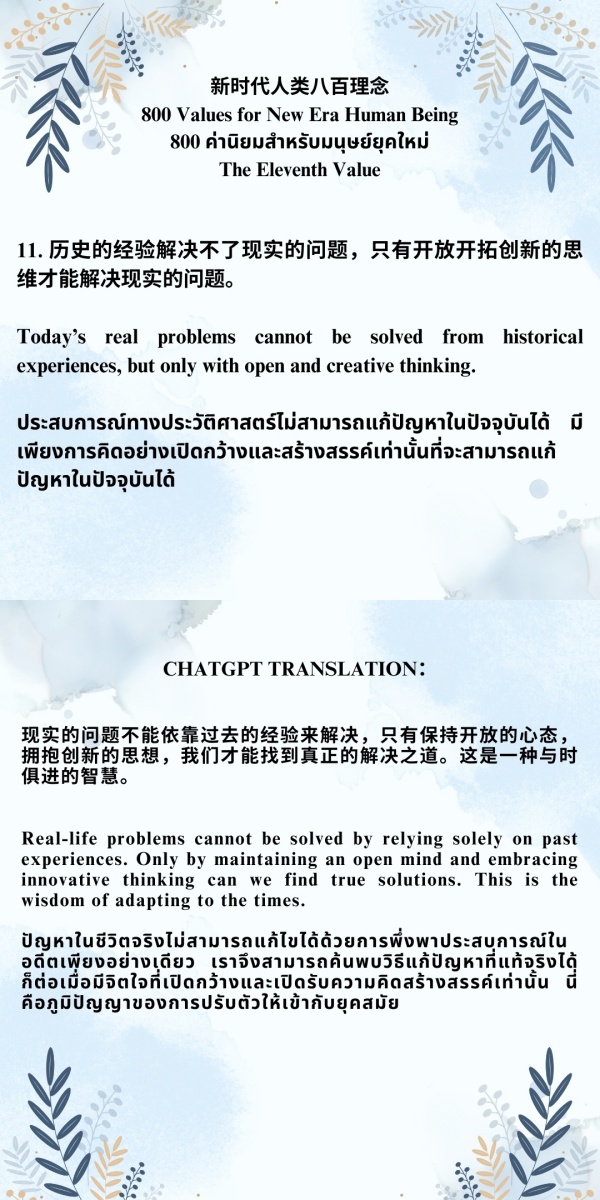 Value 11 of 800 Values for New Era Humans+ ChatGPT Translation
[youtube]ysEi_eF
Value 11 of 800 Values for New Era Humans+ ChatGPT Translation
[youtube]ysEi_eF
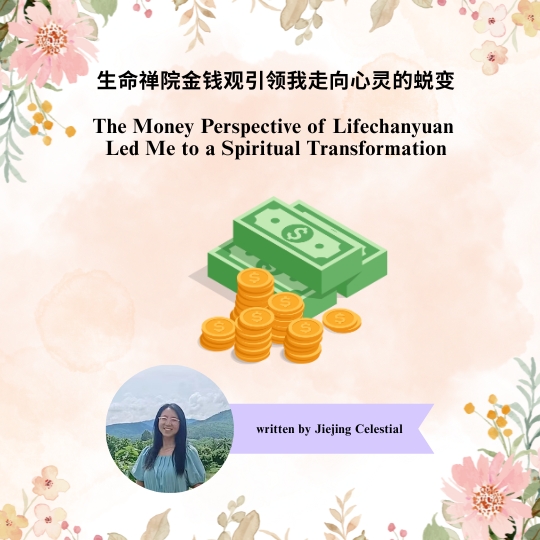 The Money Perspective of Lifechanyuan Led Me to a Spiritual Transformation
Jiej
The Money Perspective of Lifechanyuan Led Me to a Spiritual Transformation
Jiej
 The Magical yet Simple Life in the Second Home – Welcoming Two Friends from the
The Magical yet Simple Life in the Second Home – Welcoming Two Friends from the
 4 Questions from an American Visitor, Guy, About My Life in Lifechanyuan Thailan
4 Questions from an American Visitor, Guy, About My Life in Lifechanyuan Thailan
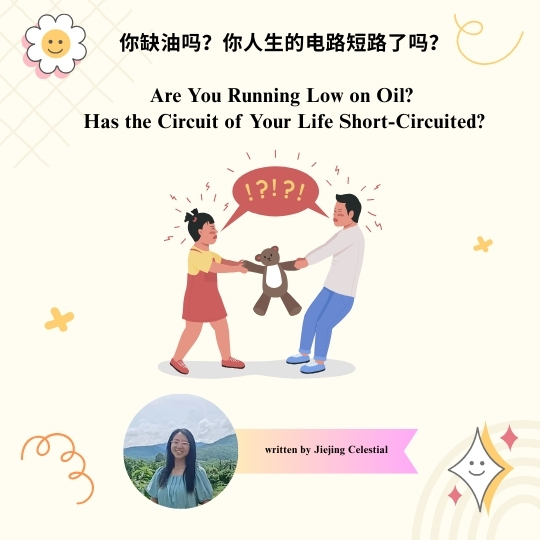 Are You Running Low on Oil? Has the Circuit of Your Life Short-Circuited?
Jieji
Are You Running Low on Oil? Has the Circuit of Your Life Short-Circuited?
Jieji
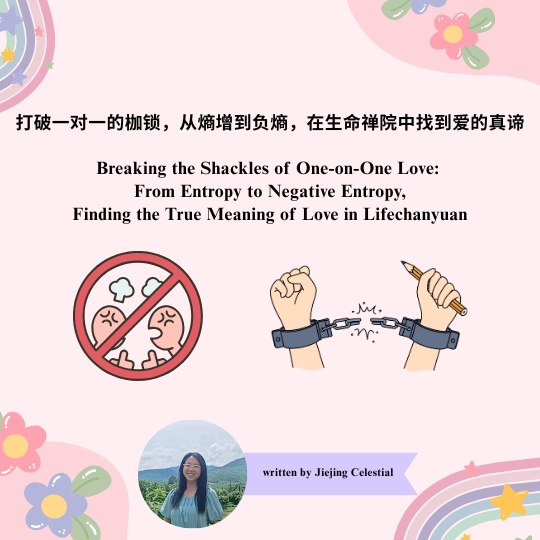 Breaking the Shackles of One-on-One Love: From Entropy to Negative Entropy, Find
Breaking the Shackles of One-on-One Love: From Entropy to Negative Entropy, Find


 Post time 2017-10-05 12:38:10
Post time 2017-10-05 12:38:10


